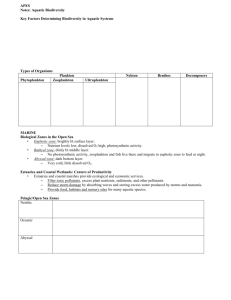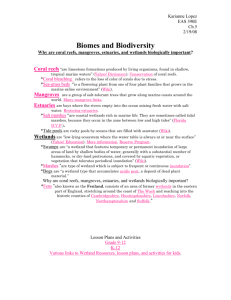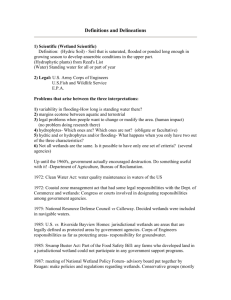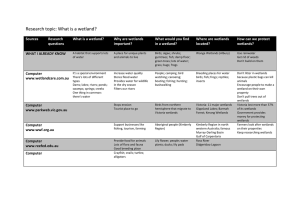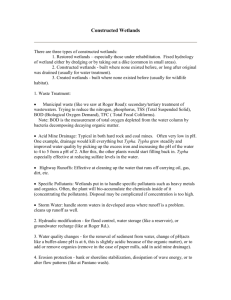*The 3 common types of freshwater wetlands are: marshes, swamps
advertisement
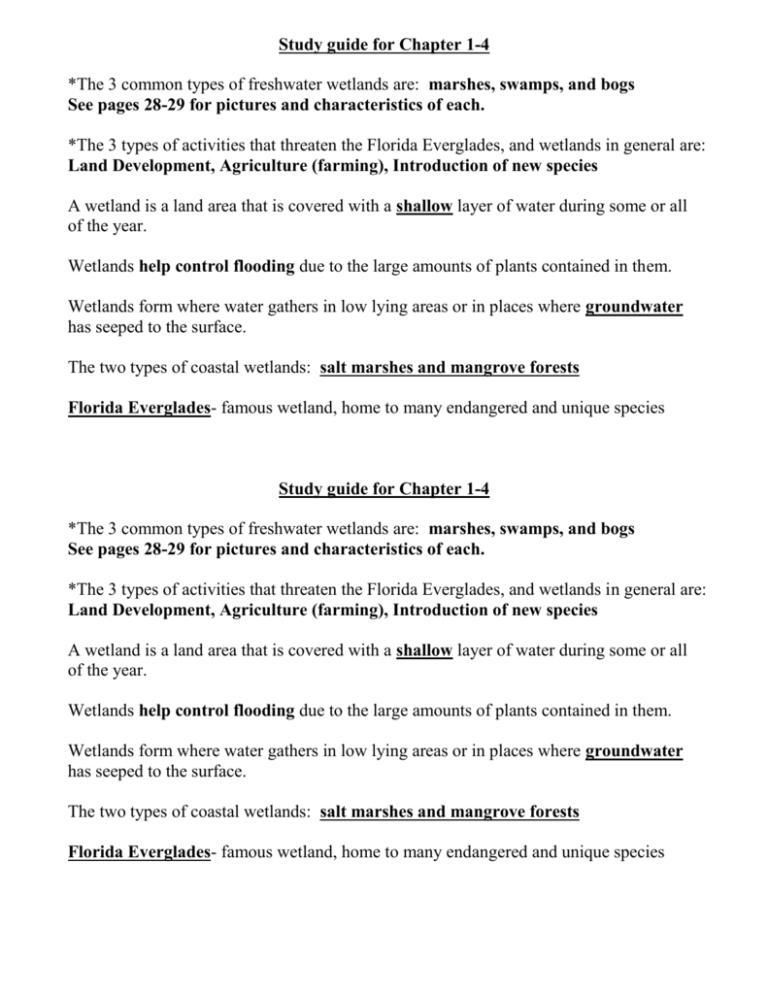
Study guide for Chapter 1-4 *The 3 common types of freshwater wetlands are: marshes, swamps, and bogs See pages 28-29 for pictures and characteristics of each. *The 3 types of activities that threaten the Florida Everglades, and wetlands in general are: Land Development, Agriculture (farming), Introduction of new species A wetland is a land area that is covered with a shallow layer of water during some or all of the year. Wetlands help control flooding due to the large amounts of plants contained in them. Wetlands form where water gathers in low lying areas or in places where groundwater has seeped to the surface. The two types of coastal wetlands: salt marshes and mangrove forests Florida Everglades- famous wetland, home to many endangered and unique species Study guide for Chapter 1-4 *The 3 common types of freshwater wetlands are: marshes, swamps, and bogs See pages 28-29 for pictures and characteristics of each. *The 3 types of activities that threaten the Florida Everglades, and wetlands in general are: Land Development, Agriculture (farming), Introduction of new species A wetland is a land area that is covered with a shallow layer of water during some or all of the year. Wetlands help control flooding due to the large amounts of plants contained in them. Wetlands form where water gathers in low lying areas or in places where groundwater has seeped to the surface. The two types of coastal wetlands: salt marshes and mangrove forests Florida Everglades- famous wetland, home to many endangered and unique species


